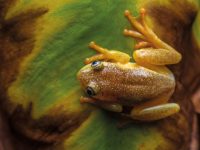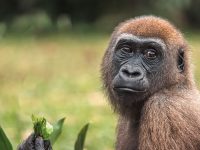
«It is a hat», they used to say. Based on this response, the narrator of the popular book The Little Prince measured the lucidity of the people he showed one of his drawings to. The illustration showed an elephant inside a large snake. Surprisingly, most of the people he showed it to only saw the shape of a hat. Society’s complacency in the face of global biodiversity loss, habitat fragmentation, emerging diseases and relentless global warming suggests that, when asked how we perceive our relationship with the natural environment, the answer is to look no further than a simple hat. It has recently been shown that the COVID-19 crisis has led to an overall reduction in carbon dioxide emissions of 17 % in early April 2020, compared to the same period in 2019; this reduction was as high as 30 % in some countries. Despite these encouraging figures, this percentage drops to 4–7 % if the annual average is taken into account. Moreover, just one month later there was an all-time high in the concentration of carbon dioxide in the atmosphere: 418 parts per million. Even the partial standstill of some of the world’s major polluters has not brought us any closer to solving the problems mentioned above. To achieve this, we need far-reaching long-term measures. In fact, the Intergovernmental Panel on Climate Change (IPCC) warns that a global temperature increase of over 1.5°C in the coming decades will have devastating consequences for ecosystems and, consequently, for human beings. To avoid this, the annual reduction of carbon dioxide emissions into the atmosphere should be higher than 7 % between now and 2030. Although the momentary reduction in carbon dioxide levels has proved to be only a small step in the struggle for a more sustainable relationship with nature, it does confirm that action at a global level is possible when the objective is common. Meanwhile, nature watches us, unaware of how closely its fate is linked to ours. In the picture, a specimen of the collared aracari (Pteroglossus torquatus) photographed in Ecuador. The wide aperture helps to defocus the background and focus attention on the animal, and also increases the amount of light perceived by the sensor. This, in turn, allows for an increase in shooting speed. The high ISO in this photo is due to the poor light conditions typical of a cloudy rainforest.





